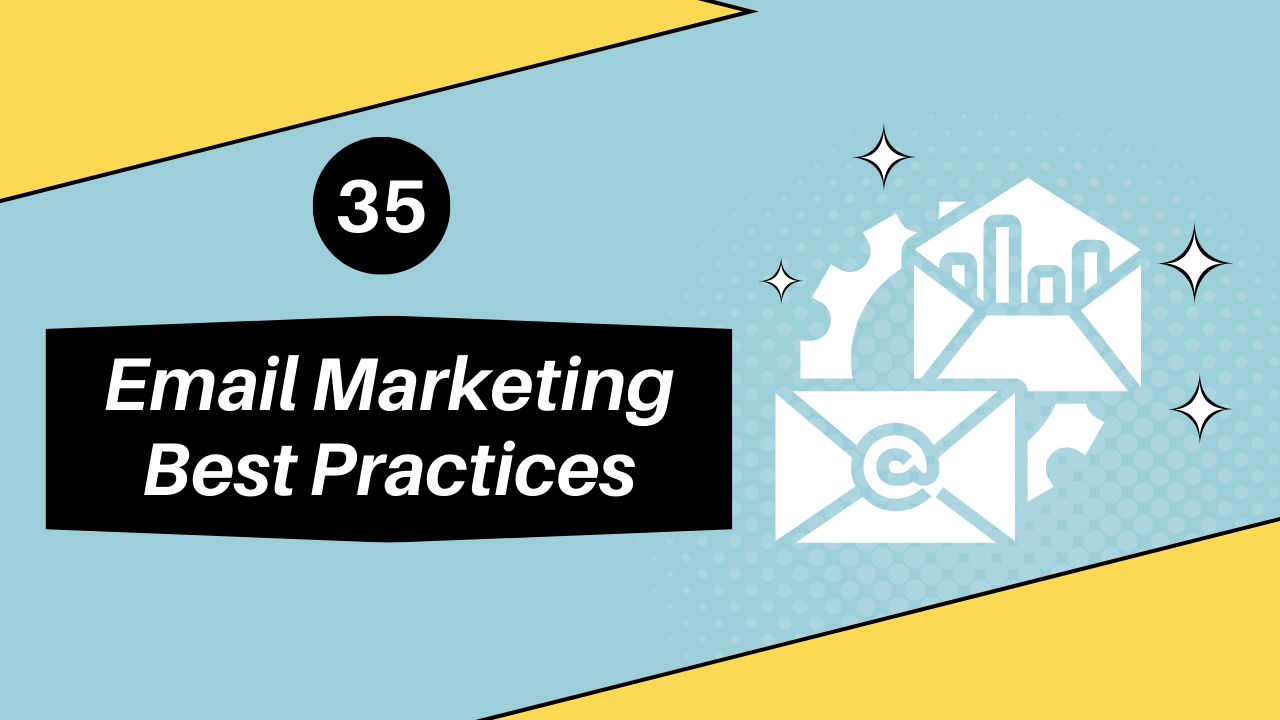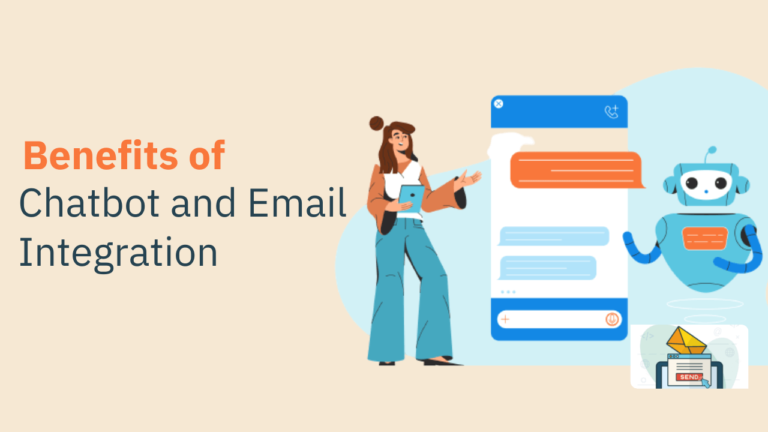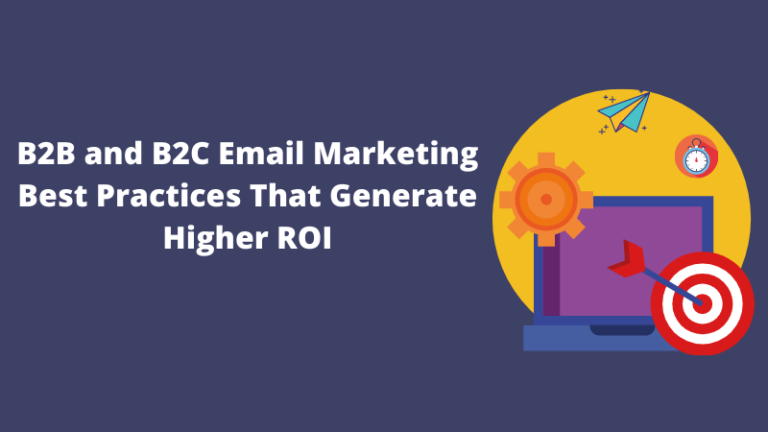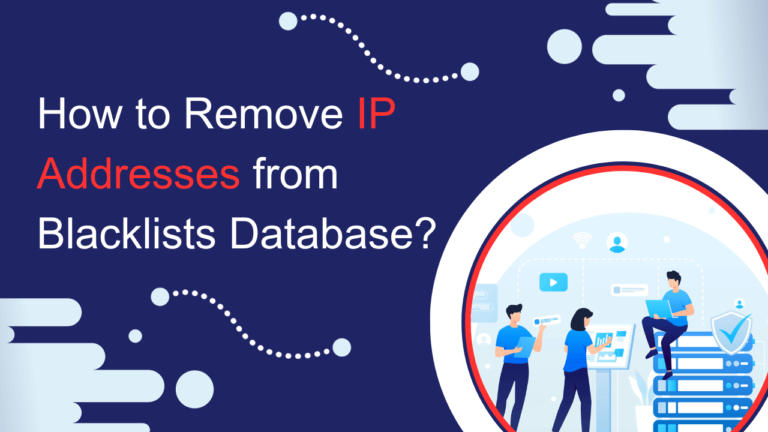Email marketing is a powerful tool for engaging customers, driving conversions, and building brand loyalty. However, sending emails without a clear goal isn’t enough. To maximize your email campaign’s impact, it’s crucial to follow proven email marketing best practices. In this article, we’ll cover 35 email marketing strategies that can help optimize your campaigns for better results.
Email Marketing Best Practices for Higher Open Rates
1. Personalize your emails
Personalizing your emails by using recipients’ names and segmenting your audience based on preferences and behaviors creates a deeper connection, moving beyond a one-size-fits-all approach By using their names, you add a human touch that resonates on a personal level. This is one of the effective email marketing best practices you should use in your email marketing campaign.
Segmenting your audience based on preferences and behaviors enables you to deliver content that is relevant and tailored to their specific interests and needs. This level of personalization not only increases engagement and open rates but also fosters a sense of loyalty and trust, as subscribers feel that you understand and cater to their individual preferences. Ultimately, personalized emails have the power to strengthen customer relationships, drive conversions, and generate lasting results for your email marketing efforts.
2. Craft compelling subject lines
Crafting compelling subject lines is essential for grabbing the recipient’s attention and enticing them to open your emails. By keeping subject lines concise, you make it easier for recipients to quickly grasp the essence of your message. Using engaging language, you can create a sense of excitement or intrigue that compels them to click.
Piquing curiosity is another effective strategy, as it leaves recipients eager to discover what lies within the email. Remember, the subject line is the gateway to your content, and a compelling one can significantly impact open rates, leading to higher engagement and better overall results for your email marketing campaigns. Read more about how to write the perfect email subject lines.
3. Mobile-responsive design
In today’s mobile-centric world, it is crucial to prioritize mobile-responsive design when creating email templates. With a significant portion of emails being opened on mobile devices, optimizing your emails for different screen sizes and devices is essential.
Mobile-responsive design ensures that your emails adapt seamlessly, providing a user-friendly experience and maintaining the integrity of your content. By employing responsive design techniques such as scalable images, fluid layouts, and legible fonts, you can deliver a consistent and visually appealing experience to your mobile audience. This not only enhances the user experience but also increases the likelihood of engagement, conversions, and overall success of your email marketing campaigns in the mobile landscape.
4. Clear call-to-action (CTA)
Including clear and compelling calls-to-action (CTAs) in your emails is essential for driving desired actions from your readers. A well-designed CTA serves as a visual anchor that grabs attention and prompts recipients to take the next step. It’s important to make your CTAs prominent, utilizing eye-catching colors and placing them strategically within the email.
Action-oriented language is key, using verbs that encourage readers to act immediately, whether it’s making a purchase, signing up for a webinar, downloading a resource, or taking advantage of a limited-time offer. By providing clear and compelling CTAs, you guide your readers towards the desired actions, increasing click-through rates and conversions, and ultimately achieving the results you seek from your email marketing campaigns.
5. Segment your email list
Segmenting your email list is a powerful strategy that allows you to tailor your messaging and deliver more targeted and relevant content to your subscribers. By dividing your subscriber list into specific segments based on factors such as demographics, preferences, purchase history, or engagement levels, you can create highly personalized campaigns that resonate with each segment. This level of customization increases the likelihood of engagement, as recipients receive content that aligns with their specific interests and needs.
Whether it’s sending exclusive offers to your most loyal customers, providing product recommendations based on past purchases, or nurturing leads based on their engagement levels, segmenting your email list enables you to deliver the right message to the right audience at the right time, leading to higher open rates, click-through rates, and overall engagement.
6. A/B testing
A/B testing is an important technique to enhance your email marketing campaigns. By conducting experiments with different elements of your emails, such as subject lines, content, layouts, or CTAs, you can gather valuable insights on what resonates best with your audience and drives higher conversion rates. Split your audience into two or more segments and send different versions of the email to each group, testing a single variable at a time. This allows you to compare the performance of each variant and identify which elements are more effective in capturing attention, driving engagement, and generating conversions.
A/B testing empowers you to make data-driven decisions, refine your email strategies, and continuously improve the performance of your campaigns over time, ensuring that you deliver the most impactful and compelling content to your subscribers.
7. Email automation
Email automation is a powerful tool that allows you to streamline your email marketing efforts and deliver timely and relevant messages to your subscribers. By utilizing automation tools, you can set up triggered emails based on specific actions or events, ensuring that your communications are personalized and targeted.
For example, you can send welcome emails to new subscribers, providing them with a warm introduction to your brand and valuable resources. Abandoned cart reminders can be automatically triggered when a customer leaves items in their shopping cart without completing the purchase, reminding them to return and complete the transaction. Additionally, sending birthday offers or anniversary emails can help you foster customer loyalty and create a personalized connection. See what types of email automation campaigns you can run.
Email automation not only saves you time and effort but also helps nurture leads, improve customer engagement, and drive conversions by delivering the right message at the right moment in the customer journey.
8. Optimize for deliverability
Optimizing email deliverability is crucial to ensure that your messages reach the intended recipients and have the highest chance of being seen. Maintaining a clean email list is essential, as it involves regularly removing inactive or bounced email addresses. This helps improve the overall quality of your list and reduces the risk of your emails being flagged as spam.
Additionally, following email deliverability best practices is vital to avoid spam filters and increase the likelihood of your messages landing in the inbox. Some best practices include using double opt-in for subscribers, providing a clear and easy unsubscribe option, authenticating your domain, and monitoring your sender reputation. By prioritizing deliverability, you maximize the reach and impact of your email marketing campaigns, ensuring that your messages effectively reach your audience and drive the desired results. You must use tools like GlockApps, InboxAlly, Warmy, MyEmailVerifier, and MailerCheck to improve email deliverability.
9. Consistent branding
Consistent branding is a key aspect of successful email marketing. By utilizing consistent branding elements such as logos, colors, and fonts, you create a cohesive and recognizable identity for your brand. This not only reinforces brand recognition but also builds trust with your audience. When subscribers consistently see familiar branding in your emails, they develop a sense of familiarity and reliability, which can lead to higher engagement and conversions.
Consistency in branding also helps to maintain a professional and polished image, enhancing your credibility in the eyes of your subscribers. Whether it’s the design of your email templates, the placement of your logo, or the use of your brand colors, maintaining a consistent and cohesive brand identity throughout your email marketing campaigns is essential for establishing a strong and lasting connection with your audience.
10. Provide valuable content
Providing valuable content is a fundamental aspect of successful email marketing. Your subscribers expect to receive meaningful and relevant information that adds value to their lives. By offering content that aligns with their interests, you establish yourself as a trusted source of expertise and build a loyal audience. This can include educational resources, such as guides, tutorials, or how-to articles that help your subscribers solve problems or learn new skills. Sharing industry insights, trends, and news can position your brand as a thought leader and keep your audience informed.
Additionally, offering exclusive offers, discounts, or promotions to your email subscribers can make them feel appreciated and incentivize them to engage with your emails and make purchases. By consistently providing valuable content, you strengthen your relationship with your subscribers, increase engagement, and foster long-term loyalty to your brand.
11. Use eye-catching visuals
Using eye-catching visuals is an effective way to make your emails visually engaging and capture the attention of your subscribers. Incorporating visually appealing images, graphics, and videos can create a dynamic and memorable experience. Images can help showcase your products or services, allowing subscribers to visualize and connect with your offerings.
Graphics, such as infographics or charts, can effectively convey information in a visually appealing and easily digestible format. Videos are another powerful visual tool that can deliver your message in an engaging and interactive way. Whether it’s a product demonstration, a tutorial, or a behind-the-scenes look, videos can increase viewer engagement and leave a lasting impression. By leveraging eye-catching visuals, you not only enhance the aesthetics of your emails but also make them more engaging, memorable, and effective in conveying your message to your subscribers. Here are free tools you can use to create eye-catching templates.
12. Keep it concise
Keeping your emails concise is crucial in capturing and maintaining your recipients’ attention. With people having limited attention spans, it’s important to deliver your message in a clear and succinct manner. Structure your content using bullet points, subheadings, and short paragraphs to make it easily scannable. By breaking down information into digestible chunks, you enable readers to quickly grasp the main points without feeling overwhelmed.
Concise emails not only respect your subscribers’ time but also increase the likelihood of them reading the entire message. Additionally, consider using compelling and concise language in your subject lines to entice recipients to open the email in the first place. By prioritizing brevity and readability, you ensure that your email content is effectively communicated and absorbed by your audience.
13. Opt-in and unsubscribe options
Opt-in and unsubscribe options are essential components of ethical and effective email marketing practices. It is crucial to respect your recipients’ preferences and ensure that they have explicitly opted-in to receive your emails. This helps maintain a healthy and engaged subscriber base who are genuinely interested in your content.
Additionally, providing a clear and easy-to-find unsubscribe option is equally important. While it may seem counterintuitive, making it easy for subscribers to unsubscribe is more beneficial in the long run. It allows individuals who are no longer interested in your emails to opt-out, ensuring that you maintain a high-quality and engaged audience. By prioritizing transparency and giving recipients control over their subscriptions, you build trust and credibility while avoiding potential complaints and spam reports. Remember, an engaged and interested audience will yield better results and higher engagement rates than a large but uninterested one.
14. Email frequency
Finding the right email frequency is crucial to maintaining a healthy relationship with your subscribers. While it’s important to stay on their radar and remain top of mind, bombarding them with too many emails can lead to fatigue and potential unsubscribes.
It’s essential to strike a balance by testing different sending frequencies and closely monitoring engagement metrics. Pay attention to open rates, click-through rates, and unsubscribe rates to gauge the impact of your email frequency on subscriber behavior.
Take into account the preferences and expectations of your specific audience, as different industries and target demographics may have varying tolerance levels for email frequency. By finding the sweet spot, you ensure that you maintain consistent communication without overwhelming your subscribers, ultimately maximizing engagement and preserving a positive relationship with your audience.
15. Personalize email from address
Personalizing the email from address is an often overlooked yet impactful aspect of email marketing. By using a recognizable sender name and a professional email address, you establish trust and credibility with your recipients. A sender name that aligns with your brand or is associated with a familiar person within your organization helps recipients identify your emails amidst the clutter of their inbox.
Additionally, using a professional email address that matches your domain (e.g., yourname[at]yourcompany.com) enhances your brand image and reinforces authenticity. Avoid generic or suspicious-looking email addresses, as they can trigger doubts and raise concerns about the legitimacy of your emails.
By personalizing the email from address, you increase the chances of your emails being opened and foster a sense of trust, which is vital for building and maintaining a strong relationship with your subscribers.
16. Integrate social media
Integrating social media into your email marketing strategy can amplify your reach and engagement. By including social media sharing buttons in your emails, you make it easy for recipients to share your content with their own networks. When your subscribers find value in your emails, they are more likely to share them on platforms like Facebook, Twitter, or LinkedIn, exposing your brand to a wider audience. This not only increases brand visibility but also has the potential to attract new subscribers who discover your content through shared posts.
Furthermore, integrating social media also allows you to cross-promote your social channels, encouraging email recipients to connect with your brand on various platforms. By seamlessly bridging the gap between email and social media, you can leverage the power of both channels to enhance your overall marketing efforts and foster a stronger online community around your brand.
17. Test across email clients
Testing your emails across different email clients and platforms is essential to guarantee a consistent and optimal experience for all recipients. Different email clients, such as Gmail, Outlook, Apple Mail, and others, may render emails differently, leading to variations in formatting, layout, and overall display.
By testing your emails across a range of email clients and devices, you can identify any issues or inconsistencies and make necessary adjustments to ensure that your emails are well-received across the board. This includes checking the rendering of images, text formatting, responsive design, and the functionality of links and CTAs. By conducting thorough testing, you can mitigate the risk of broken layouts or distorted content, ensuring that your message is delivered in its intended format and that recipients have a positive and seamless experience, regardless of the email client they use. You can check inbox placements for free using MailerCheck, GlockApps, and InboxAlly.
18. Monitor email analytics
Monitoring email analytics is essential for understanding the effectiveness of your email marketing campaigns and making data-driven decisions. By regularly analyzing key email metrics, such as open rates, click-through rates, conversion rates, and unsubscribe rates, you gain valuable insights into the performance and engagement of your emails. These metrics provide a comprehensive view of how your audience is interacting with your content and help identify trends, strengths, and areas for improvement.
For example, if you notice a decline in open rates, you can experiment with different subject lines or adjust your sending times to increase engagement. If click-through rates are low, you can optimize your calls-to-action or improve the relevancy of your content. By closely monitoring email analytics, you can identify what resonates with your audience, refine your strategies, and continuously optimize your campaigns for better results. This iterative process allows you to maximize the impact of your email marketing efforts and drive meaningful outcomes for your business.
19. Personalized recommendations
Personalized recommendations are a powerful way to leverage customer data and insights to enhance your email marketing campaigns. By analyzing customer behavior, purchase history, and preferences, you can deliver targeted and relevant product recommendations or tailored offers directly to your subscribers’ inboxes.
Personalized recommendations demonstrate that you understand your customers’ needs and interests, making your emails more valuable and engaging. Whether it’s suggesting complementary products based on past purchases, offering exclusive discounts on items they have shown interest in, or providing personalized content based on their browsing behavior, personalization fosters individualized attention and boosts conversion rates. By leveraging data-driven personalization, you can deliver a personalized shopping experience, foster customer loyalty, and drive higher engagement and sales through your email marketing efforts.
20. Use urgency and scarcity
Utilizing urgency and scarcity in your email marketing can be a powerful motivator for recipients to take action promptly. By incorporating limited-time offers, flash sales, or countdown timers, you create a sense of urgency and a fear of missing out (FOMO) among your subscribers. The fear of losing out on a great deal or exclusive opportunity can drive them to make a purchase or engage with your call-to-action without delay.
Countdown timers visually display the ticking clock, further intensifying the urgency and prompting recipients to act quickly. By strategically incorporating urgency and scarcity in your email campaigns, you encourage immediate action, increase conversions, and create a sense of excitement around your offerings. However, it’s important to maintain transparency and integrity in your messaging, ensuring that the urgency and scarcity are genuine and align with your brand’s values.
21. Implement social proof
Implementing social proof in your email marketing strategy is a powerful way to build credibility and trust with your subscribers. By including customer testimonials, product reviews, or case studies in your emails, you provide real-life evidence of the value and quality of your offerings. Social proof acts as a validation for your brand, showcasing that others have had positive experiences with your products or services.
When potential customers see testimonials or reviews from satisfied customers, it instills confidence in their decision-making process and reduces any doubts or hesitations they may have. Including social proof in your emails helps to establish your brand as trustworthy, reliable, and capable of delivering on its promises. It creates a sense of reassurance and increases the likelihood of conversions by demonstrating that others have had positive outcomes. By leveraging social proof, you tap into the power of word-of-mouth marketing and harness the influence of satisfied customers to enhance the effectiveness of your email campaigns.
22. Email list growth
Email list growth is a continuous effort in email marketing. To expand your subscriber base, actively promote your email newsletter across various channels. Make it prominent on your website, blog, and social media profiles, encouraging visitors to sign up and stay connected. To incentivize subscriptions, offer exclusive content, such as industry insights, how-to guides, or valuable resources that are only accessible to subscribers.
Additionally, consider providing special discounts, promotions, or freebies as a welcome gesture to new subscribers. By offering these incentives, you not only capture the attention of potential subscribers but also demonstrate the value they will receive by joining your email list. Remember to optimize your sign-up forms to be user-friendly and capture relevant information to personalize future communications. By focusing on email list growth, you expand your reach, nurture a larger audience, and have more opportunities to engage and convert leads into loyal customers.
23. Optimize for accessibility
Optimizing your emails for accessibility is an important aspect of inclusive email marketing. By adhering to accessibility guidelines for email design and content, you ensure that individuals with disabilities can access and engage with your email content effectively. Consider incorporating features such as alt text for images, which provides descriptive text for visually impaired readers using screen readers. Use clear and legible fonts, appropriate color contrasts, and avoid relying solely on visual cues.
Additionally, structure your emails with headings, subheadings, and proper HTML coding to facilitate navigation for screen reader users. By making your emails accessible, you not only comply with legal requirements but also demonstrate your commitment to inclusivity and reaching a wider audience. It’s important to prioritize accessibility to ensure that all recipients, regardless of their abilities, can fully engage with your email content and have an equal opportunity to benefit from your messages.
24. Personalized re-engagement campaigns
Personalized re-engagement campaigns are a valuable strategy to reconnect with dormant or inactive subscribers. By identifying those who have shown decreased engagement with your emails, you can create targeted campaigns specifically designed to win them back. These campaigns can include personalized content, special offers, or incentives to reignite their interest in your brand. Alternatively, you can give them the option to update their preferences, allowing them to tailor their email communication to better suit their current needs and interests.
By reaching out to dormant subscribers with relevant and personalized content, you show that you value their relationship and are willing to make an effort to reconnect. This approach not only helps you re-engage with inactive subscribers but also allows you to gather valuable feedback and insights into their preferences, which can inform future email marketing strategies. Personalized re-engagement campaigns have the potential to reinvigorate interest, foster a renewed connection, and ultimately drive higher engagement and conversions.
25. Regularly test and optimize
Regularly test and optimize your email marketing strategies based on data and feedback to improve performance over time. By conducting A/B tests, analyzing metrics, and gathering feedback from your audience, you can identify what works best and make informed adjustments. Test different elements such as subject lines, content, visuals, CTAs, and sending times to uncover the most effective combinations. Monitor key metrics like open rates, click-through rates, and conversions to gauge the impact of your optimizations.
By consistently testing and refining your strategies, you can stay ahead of trends, adapt to evolving customer preferences, and continuously improve the effectiveness of your email marketing campaigns.
26. Use personalization beyond the name
Use personalization beyond simply addressing recipients by their names. Customize email content based on subscriber preferences, past purchases, or browsing history. By leveraging data insights, you can create tailored emails that resonate with individual interests and behaviors.
This level of personalization enhances the relevance and value of your messages, increasing engagement and driving conversions. Incorporate dynamic content, product recommendations, or exclusive offers that align with each subscriber’s unique preferences and journey. By going beyond the surface-level personalization, you create a more personalized and meaningful email experience that fosters stronger connections with your audience.
27. Implement behavioral triggers
Implement behavioral triggers by setting up automated emails that are triggered based on specific user actions, such as cart abandonment or product browsing. These triggered emails are highly targeted and timely, delivering relevant content to users based on their demonstrated behaviors.
For example, if a user adds items to their cart but doesn’t complete the purchase, an automated cart abandonment email can be sent, reminding them to complete their purchase and possibly offering an incentive. By leveraging behavioral triggers, you can deliver personalized and timely messages that have a higher likelihood of converting leads into customers. These automated emails help nurture customer relationships and guide users through their buyer journey, ultimately driving increased engagement and boosting sales.
28. Nurture leads with drip campaigns
Nurture leads with automated drip campaigns that guide subscribers through a series of relevant and engaging emails, fostering relationships and driving conversions. Drip campaigns are a sequence of pre-scheduled emails that deliver targeted content to subscribers over time. By strategically designing these campaigns, you can provide valuable information, address pain points, and showcase the benefits of your products or services.
Drip campaigns allow you to stay top-of-mind with your audience, build trust, and gradually move leads closer to making a purchase or taking a desired action. Through automated nurturing, you can maintain consistent communication, provide value at each stage of the customer journey, and maximize the potential of converting leads into loyal customers. Incorporating this effective email marketing best practice is highly recommended for your email marketing campaign.
29. Implement feedback loops
An email feedback loop (FBL) is a mechanism that allows email senders to receive feedback from Internet Service Providers (ISPs) regarding subscriber complaints and abuse reports. It is a system that helps maintain email reputation and deliverability. When a recipient marks an email as spam or reports it as abuse, the FBL notifies the email sender or their email service provider.
This feedback loop enables the sender to take necessary actions, such as removing the complaining recipient from their mailing list, investigating the complaint, or improving email practices to prevent future complaints. By participating in email feedback loops, senders can better manage their email reputation, reduce spam complaints, and maintain a positive sender reputation, which ultimately leads to better email deliverability.
30. Use dynamic content
Use dynamic content to enhance the impact of your emails. Incorporate personalized product recommendations or location-based offers that dynamically adjust based on each recipient’s preferences or location. By leveraging dynamic content, you create more relevant and engaging experiences for your subscribers. Tailoring your email content to their specific interests or geographical location increases the likelihood of driving conversions and maximizing customer engagement.
31. Implement a double opt-in process
Implement a double opt-in process to ensure high-quality and engaged subscribers. Request subscribers to confirm their subscription by sending them a confirmation email after they sign up. This additional step verifies their intent to subscribe and helps filter out fake or inactive email addresses.
By implementing a double opt-in process, you can build a more reliable and engaged email list. It ensures that your subscribers genuinely want to receive your emails, reducing the risk of spam complaints and improving email deliverability. With a double opt-in process, you can focus on nurturing a committed and interested audience, resulting in higher engagement rates and better overall email marketing performance.
32. Utilize social media ads for list building
Utilize social media ads for list building by running targeted campaigns that drive traffic to your email sign-up landing page. By leveraging the reach and targeting capabilities of social media platforms, you can effectively promote your email newsletter and attract new subscribers. Create compelling ads that highlight the benefits of subscribing and direct users to a dedicated landing page where they can easily sign up.
By integrating social media advertising into your list-building strategy, you expand your reach, tap into new audiences, and capture leads who are genuinely interested in your offerings. This approach helps you grow your email list with engaged individuals who have shown an interest in your brand, increasing the potential for meaningful engagement and conversions in your email marketing campaigns.
33. Implement personal milestones emails
Implement personal milestones emails to celebrate important moments with your subscribers, such as birthdays or anniversaries. By sending personalized emails on these special occasions, you show your subscribers that you value their relationship and appreciate their support.
These emails can include exclusive discounts, special offers, or personalized greetings to make your subscribers feel valued and appreciated. By acknowledging and celebrating personal milestones, you foster stronger connections and build customer loyalty. Implementing personal milestone emails adds a personal touch to your email marketing strategy and enhances the overall customer experience, leading to increased engagement and customer satisfaction.
34. Collaborate with influencers
Collaborate with influencers to expand your reach and amplify your email campaigns. Partnering with relevant influencers or industry experts allows you to tap into their established audience and leverage their influence to promote your content. Co-create content with influencers or have them endorse your email campaigns to increase visibility and credibility.
By collaborating with influencers, you can reach new audiences, gain access to niche markets, and build trust with their followers. This collaborative approach helps you extend your brand’s reach, generate more leads, and drive conversions through the power of influencer marketing.
35. Stay up-to-date with email marketing trends
Stay up-to-date with email marketing trends to stay ahead of the curve. Continuously educate yourself on the latest strategies, technologies, and best practices in the field. Keep an eye on emerging trends, industry insights, and innovative approaches to ensure that your email marketing efforts remain effective and relevant. Stay informed about the latest email marketing trends by following the DigitalTech360 blog.
Conclusion
By implementing these 35 email marketing best practices, you can enhance the effectiveness of your email campaigns. Personalize your emails, optimize for mobile devices, segment your audience, and analyze campaign performance. Continuously adapt and refine your approach based on data and customer feedback to drive better results and achieve your marketing goals.
When executed strategically, email marketing can be a valuable asset in building customer relationships, driving conversions, and growing your business. Apply these proven strategies to maximize the impact of your email marketing efforts and unlock the full potential of this powerful marketing channel.







